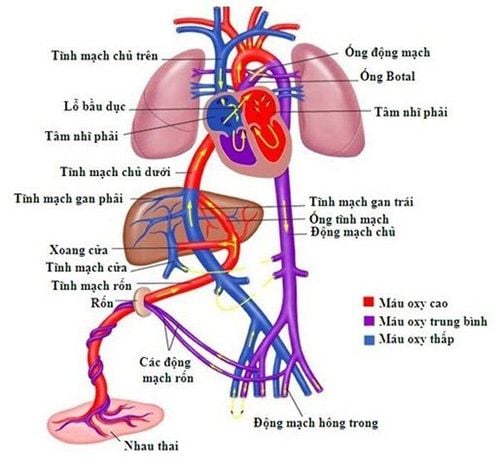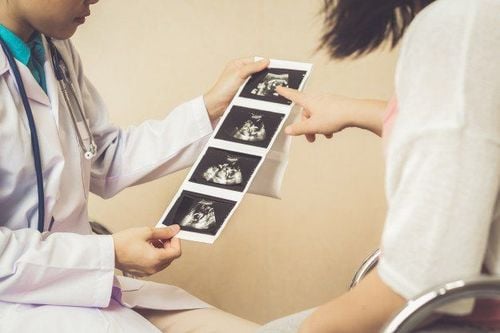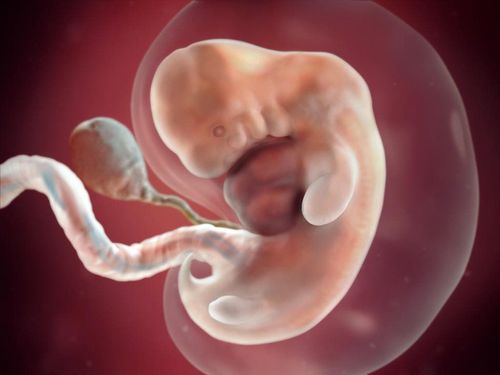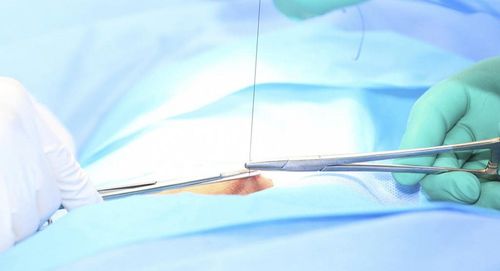This is an automatically translated article.
This article was professionally consulted by Specialist Doctor I Truong Nghia Binh - Obstetrician-Gynecologist - Department of Obstetrics and Gynecology - Vinmec Da Nang International General Hospital. Doctor has more than 13 years of experience in the field of Obstetrics and Gynecology.The fetal circulatory system is formed from the end of the second month of pregnancy, continues to exist and develop until birth. The fetal circulatory system is markedly different from that of an adult.
1. Circulatory system of the fetus
The fetal circulatory system is markedly different from that of an adult. At the same time, during pregnancy, the functioning of the fetal circulatory system is also different from that after birth.Fetal circulation undergoes a rapid transition after birth to accommodate ectopic life. The fetus is connected to the placenta by the umbilical cord. This is an organ that grows and implants in the mother's uterus during pregnancy.
The circulatory system functions to provide the fetus with nutrients and oxygen, and to remove waste and carbon dioxide from the circulation. Waste products and carbon dioxide from the fetus are sent back through the umbilical cord and placenta for the mother's circulation to be eliminated.
The circulatory system includes blood vessels in the placenta and umbilical cord, containing two umbilical arteries and one umbilical vein. Through the blood vessels in the umbilical cord allows the fetus to receive all the nutrition and oxygen it needs.
Fetal circulation passes through the lungs through a ductus arteriosus; The liver is also bypassed intravenous catheter and blood can travel from the right atrium to the left atrium through the foramen Botal. A normal fetal heart rate is between 110 and 160 beats per minute. When compared with adults, the fetus has reduced ventricular filling capacity and decreased contractility.
2. The development of fetal circulation
Fetal heart begins to appear when the fetus is 22 days old; This indicates the beginning of fetal circulation. Gas exchange initially takes place in the yolk sac until the placenta completely takes over this activity. This transition occurs when the fetus is about 10 weeks old. The mother's oxygenated blood mixes with the low-oxygen placental blood before being passed out to the fetus. Due to this mixing, the fetus is relatively hypoxic when compared with maternal or arterial blood.
The mother's uterus nourishes the fetal development environment and the vitality of the placenta. Every organ system is involved in fetal circulation because as the fetus grows and develops, it needs the oxygen and nutrients that the blood provides. Fetal blood will reach every part of the developing fetus, except the liver and lungs. However, the fetal arterial system will receive waste products originating from those organs.
3. Mechanism of fetal circulation
Blood enters the right atrium, which is the upper right chamber of the heart. When blood enters the right atrium, most of it flows through the foramen Botal and is then brought into the left atrium. The blood then enters the left ventricle, the lower chamber of the heart, and travels to the aorta. This is the large artery that comes from the heart.From the aorta, blood is sent to the heart muscle, brain and arm itself. After circulating there, the blood returns to the right atrium of the heart through the superior vena cava. Instead of returning through the foramen Botal, it enters the right ventricle.
This oxygen-poor blood is pumped from the right ventricle into the pulmonary artery. A small amount of blood continues to reach the lungs. Most of this blood is carried through the ductus arteriosus to the descending aorta; then enters the umbilical artery and flows into the placenta. In the placenta, carbon dioxide and waste products are released into the mother's circulatory system. Oxygen and nutrients from the mother's blood are released into the fetal blood.
At birth, the umbilical cord is clamped and the baby no longer receives oxygen and nutrients from the mother. With the first breaths of life, the lungs begin to expand. As the lungs expand, the alveoli in the lungs clear the fluid. The baby's blood pressure rises and pulmonary pressure is significantly reduced, reducing the need for the ductus arteriosus to shunt blood, helping the shunts to close. These changes increase pressure in the left atrium of the heart and decrease pressure in the right atrium. The pressure change stimulates the ovary to close.

4. Fetal physiology
In fetal circulation, the right side of the heart has higher pressure than the left side. This pressure difference allows the ductus arteriosus to remain open. In the postpartum circulation, when the baby takes its first breath, lung resistance decreases. Blood begins to flow through the lungs, and the pressure on the left side becomes higher than on the right.Congenital heart defects arise when the ductus arteriosus does not close after birth. Abnormalities in the anatomy of the heart can also alter proper blood flow.
Cyanotic heart defects usually arise from right to left ductus arteriosus in the blood after birth. With deoxygenated blood passing through the lungs and entering the circulatory system, a baby's body may appear blue at birth.
The development of endocardial cushioning is necessary to explain the occurrence of some cardiac defects. The endocardial cushions contribute to the appearance of the atrial and ventricular septum, the mitral and tricuspid valves, the conotruncal septum, and the atrioventricular septum. When there is an endocardial buffer defect, it can cause heart defects such as ASD and VSD. These defects are also common in patients with trisomy 21 and fetal alcohol syndrome. ASDs arise when there is a hole in the atrial septum after birth. An ASD leads to an anastomosis between the right and left atria. The suboptimal type of ASD is due to incomplete development of the endocardium and is seen less frequently than the secundum type. VSD arises when there is a hole in the septum after birth. A VSD leads to communication between the right and left ventricles.
Please dial HOTLINE for more information or register for an appointment HERE. Download MyVinmec app to make appointments faster and to manage your bookings easily.
References: stanfordchildrens.org; NCBI














